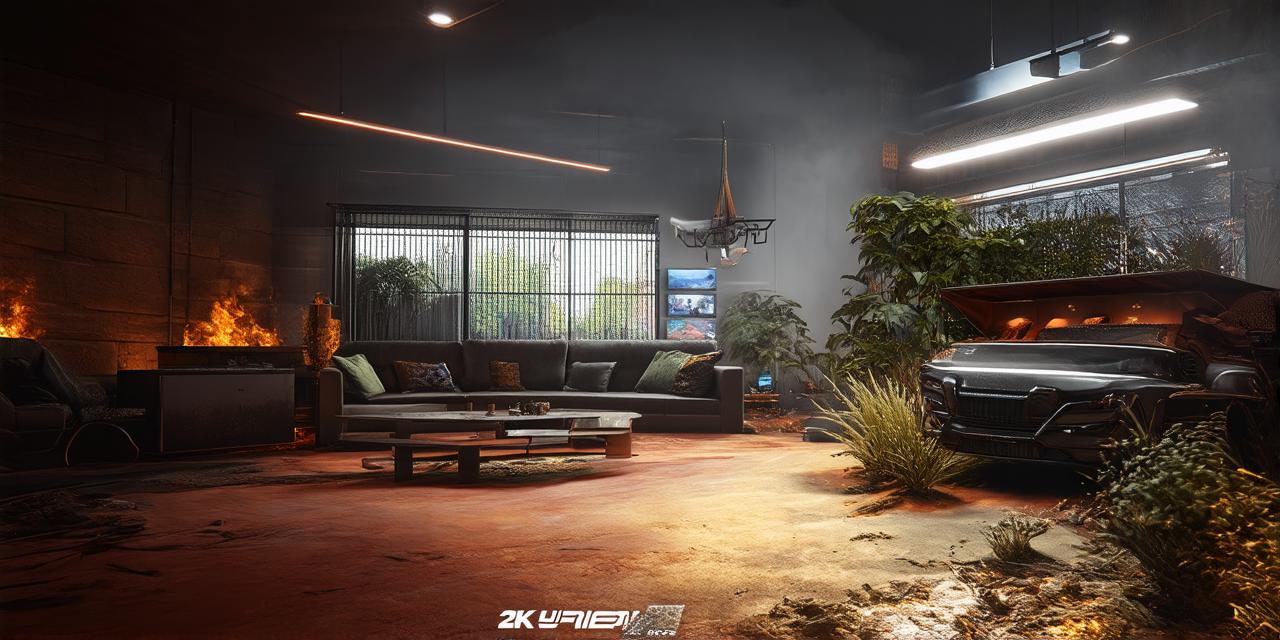Unreal Engine 4 (UE4) is a powerful game development platform that allows developers to create stunning, high-performance games for a wide range of platforms. With its intuitive interface, UE4 makes it easy for beginners to get started with game development and create professional-quality games in no time.
Step 1: Understanding the Basics of Unreal Engine 4
Before diving into the specifics of game development with UE4, it’s important to have a basic understanding of what the platform is and how it works. UE4 is a real-time 3D creation tool that allows developers to build games for a wide range of platforms, including PC, console, mobile, and virtual reality (VR).
UE4 has a modular architecture, which means that you can choose from a variety of features and tools depending on your needs. Some of the key features of UE4 include:
- Blueprint visual scripting: a graphical programming system that allows developers to create complex game logic without writing code.
- Physics simulation: realistic physics simulation that makes games feel more immersive and interactive.
- Animation tools: advanced animation tools that allow developers to create realistic character movements and animations.
- Multiplayer support: built-in support for creating multiplayer games that can be played by multiple players online.
Step 2: Setting Up Your Development Environment
The next step is to set up your development environment. This involves installing UE4 on your computer, creating a new project, and setting up the necessary files and folders.

To install UE4, go to the Epic Games Launcher (https://www.unrealengine.com/en-US/download) and download the latest version of UE4. Once installed, launch UE4 and create a new project. Choose a template for your game, such as a 2D platformer or a 3D first-person shooter, and select the appropriate settings for your project.
Step 3: Creating Your Game World
Once you have set up your development environment, it’s time to start creating your game world. This involves adding assets, such as terrain, buildings, and characters, to your scene.
UE4 has a powerful asset library that includes thousands of pre-made assets, such as characters, vehicles, and environments. You can also create your own assets using 3D modeling software, such as Blender or Maya. Once you have created your assets, import them into UE4 and add them to your scene.
Step 4: Building Game Logic with Blueprint Visual Scripting
Now that you have created your game world, it’s time to start building the game logic that will make your game interactive and engaging. UE4 uses a graphical programming system called Blueprint visual scripting, which allows developers to create complex game logic without writing code.
Blueprint visual scripting uses a drag-and-drop interface that makes it easy to connect different elements of your game world together. You can use Blueprint visual scripting to create actions like character movement, enemy behavior, and environmental effects like water and fire. With UE4’s powerful Blueprint visual scripting capabilities, you can create games that feel dynamic and engaging without having to write a single line of code.
Step 5: Adding Physics Simulation to Your Game
Physics simulation is an important aspect of game development, as it allows for realistic player movement and interaction with the environment. UE4 has built-in support for physics simulation, which you can use to create complex physics interactions like character jumping, sliding, and collisions with objects in the environment.
You can use Blueprint visual scripting to create actions that interact with the physics engine, such as setting up gravity, creating collisions, and applying forces to game objects. With UE4’s powerful physics simulation capabilities, you can create games that feel incredibly realistic and immersive.
Step 6: Adding Animation to Your Game
Animation is another important aspect of game development, as it allows for realistic character movements and interactions with the environment. UE4 has built-in support for animation, which you can use to create complex animations like character walking, running, and attacking.
You can use Blueprint visual scripting to create actions that interact with the animation system, such as setting up animations for different character states and applying animations to game objects. With UE4’s powerful animation capabilities, you can create games that feel dynamic and engaging, with realistic character movements and interactions.
Step 7: Adding Multiplayer Support to Your Game
Multiplayer games are becoming increasingly popular, and UE4 has built-in support for creating multiplayer games that can be played by multiple players online. To add multiplayer support to your game, go to the Networking tab in the Content Browser and drag-and-drop different networking components onto your game objects.
You can then use Blueprint visual scripting to create complex networking behaviors, such as matchmaking, player synchronization, and predictive networking. With UE4’s built-in support for multiplayer, you can create games that are both fun and scalable, allowing players from all over the world to enjoy your creations together.
Summary
In just 24 hours, you can master Unreal Engine 4 and start creating your own games. With its intuitive interface, powerful features, and built-in support for multiplayer, UE4 makes it easy for beginners to get started with game development and create professional-quality games in no time.



